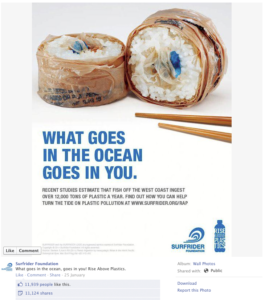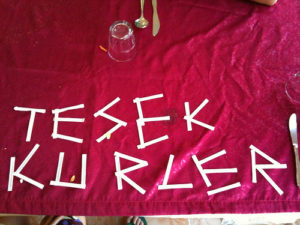There are 61 million Facebook users in India. And a recent report named Greenpeace India’s Facebook page as having the second highest engagement in the country.
The recognition from Social Bakers is for October 2012. The monthly social media report grades the country’s top social media brands in three categories: total number of users, engagement, and response rates, with Greenpeace being No. 2 for its 1.17 per cent engagement rate.
Akshey Kalra, Greenpeace India online/offline campaigner, says increased engagement comes after implementing learnings from last year’s Digital Mobilisation Skill Share (DMS).
It was conversations at the first annual event that shares mobilisation knowledge and experiences that Greenpeace India realized the need to focus on quality over quantity, and build a new engagement plan for its Facebook page.
Upon returning to India, Akshey worked with then social media officer Vaishnavi Bhandary to implement a new strategy in time for its Junglistan project ( a campaign to protect India’s forests from coal mining), which ran from August until the United Nations Convention on Bio-Diversity in October.
During this time, Greenpeace India attracted more than 35,000 new users, nearly doubling its Facebook fans, which stands at 106,000. On several occasions Greenpeace India’s viral reach stretched to more than 1.2 million. At one point, nearly half of its then 75,000 fan base was talking about them.
Here are some highlights from Greenpeace India’s engagement strategy:
Promote Popular Posts
Greenpeace India began watching which images or infographics experienced good organic growth in a 24-hour period. Once they saw a post getting traction on its own, they’d pay to promote the post to all of its users.
Convening the Conversation
Greenpeace India actively prompted discussion with its users. Using a personal voice, team members would comment on their own posts, ask people questions, or thank them for their comments. They’d ask their fans to send them Facebook images. They wouldn’t ask people to share or like their image.
“(Whenever we saw a comment) we’d take it to the next level asking them things like “we’re working on this part of the project now how do you think we can make it better? or asking them simple questions,” says Akshey.
They also engaged people on facts related to their campaign’s goal. For example, when focusing on tiger habitat they’d post a picture of a tiger and asked people if they knew why it had a white spot behind its ear.

A number of Facebook posts like this one had a reach of more than 100k and high virality.
Greenpeace India was also able to move some of the conversations off Facebook by asking people who wanted to do more than sign a petition to fill out an online volunteering form. The form asked people what skills they could offer with Greenpeace India creating opportunities to use those skill sets.
Know When People are Online
Greenpeace India’s most recent successful strategy was investing heavily in paid advertising during the Christmas holidays. It was the first time the team experimented with paid ads, running all three types of Facebook advertisements at a time when they knew people would be spending more time online. The ads, five running from each type of advertising, were changed every three days.
The investment worked, the page gained 25,000 new likes with nearly 12,000 people joining Greenpeace India’s page from direct advertising.
Akshey says in the coming weeks the team will be analyzing the different ads to learn what types worked best.
What’s Next
With a new cohort of Greenpeace supporters coming on-board during its anti-coal campaign, Greenpeace India plans to redouble its communication about clean energy in the coming months. In April the team will re-invoke a conversation over energy supply and demand with the start of a solutions-based campaign focusing on green energy. The team also plans to continue promoting posts to increase its reach while spending more time increasing engagement among existing and new supporters.
Akshey credits the DMS for connecting people working on similar issues in a way that builds trust and new relationships.
“Even though I had their contact information before it’s the one to one at these conferences that seems to open new gateways,” he says.
Akshey adds he’d be happy to share his engagement strategy with other groups interested in learning more.
This year’s DMS takes place Feb. 3-7 near Barcelona, Spain.
Stay Connected: @aksheykalra
Related Posts:
Highlights from the Digital Mobilisation Skillshare — April 2012
Meet the Mob Squad: Akshey Kalra
Middle East Facebook strategy gains 180,000 fans
Do you have an innovation in mobilisation and people-powered campaigns? Share it with Mob Lab by contacting moblab@greenpeace.org.
Categories:
organising, mobilising and engagement



